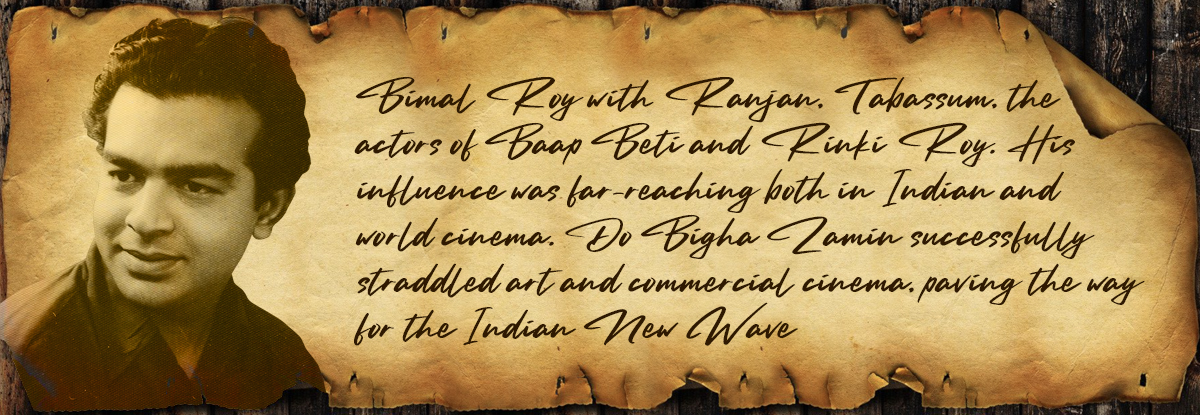BIMAL ROY
FEW DIRECTORS HAVE LEFT SUCH A MARK ON INDIAN CINEMA AS BIMAL ROY. HIS NAME IS INDELIBLY LINKED TO SOME OF THE MASTERPIECES OF INDIAN CINEMA, INCLUDING DO BIGHA ZAMEEN (1953), PARINEETA (1953),MADHUMATI (1958), SUJATA (1959), AND BANDINI (1963)
Bimal Roy was born on July 12, 1909, into a landholding family in Dacca in East Bengal (Now Dhaka in Bangladesh). During Partition, he came to Calcutta and began working as an assistant cameraman and cameraman on documentaries in 1932 and 1933. His foray into cinema, however, effectively commenced when he was hired as a publicity photographer by PramatheshBarua. Soon, Roy was engaged as an assistant cameraman to Nitin Bose at Calcuttaʼs reputed New Theatres Studios.
His fine sense of lighting and composition won him accolades from every quarter. He was famous for his romantic-realist melodramas that took on important social issues while still being entertaining. He was a filmmaker of great in-depth understanding of human strengths and weaknesses.New Theatres classics like Mukti and Devdas bearhis distinguished mark. Few know that Bimal Roy made two outstanding documentaries for the British Government. There is no trace of these early masterpieces.
The collapse of New Theatres, the pressures of World War II upon Kolkata and the advent of Bombay cinema all heralded a new phase in Bimal Royʼs life. He moved to Bombayin 1952-53 and launched Bimal Roy Productions with Do Bigha Zamin.
The film made a strong universal impact for its humane portrayal of Indian peasantry. It is considered one of the 10 best Indian films of all time.Roy elicited a stellar performance from Balraj Sahni, who plays a peasant, Shambu, caught up in a cycle of debt to the local landlord. Bimal Royʼs social sensibility and humanity are palpably on display in this superb film, which won him many international accolades, including the International Prize at the 1954 Cannes Film Festival.
Bimal Roy diedof cancer on January 7, 1966 at the age of 56, leaving behind several incomplete projects, among them Amrita KumbherShandhaney and Mahabharata. His influence was far-reachingin Indian and world cinema, and extending to both mainstream commercial Hindi cinema and the emerging Parallel Cinema at home. The success of Do Bigha Zamin paved the way for the Indian New Wave.
Few directors have left such a mark on Indian cinema as Bimal Roy. His name is indelibly linked to some of the masterpieces of Indiancinema, including Do Bigha Zameen (1953), Parineeta (1953),Madhumati (1958), Sujata (1959), and Bandini (1963)

